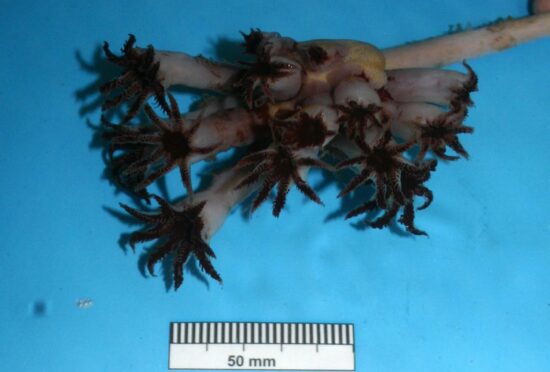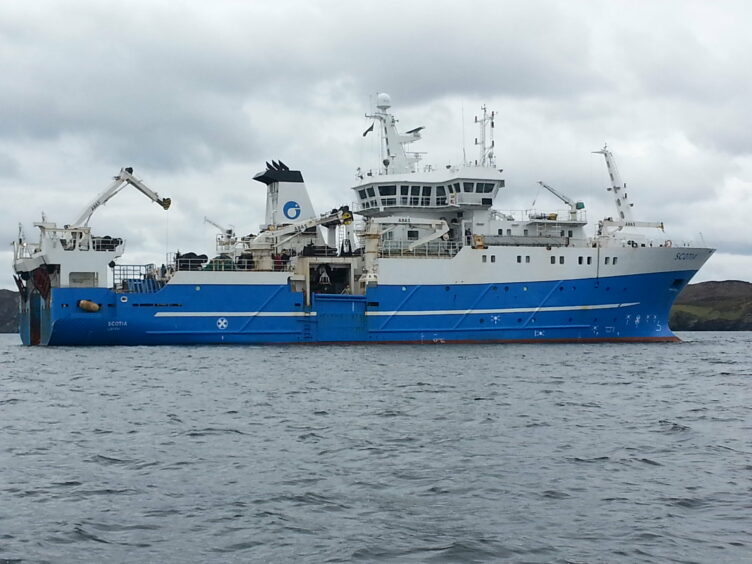A new species of soft coral has been discovered in west coast waters.
The “exciting discovery” of Pseudumbellula scotiae was made by government scientists, collaborating with The University of Seville.
The soft coral, also known as seapen, was discovered in the deepwater at the Rockall Trough.
Scientists say the find underlines the importance of biodiversity, and supports the continued use of Marine Protection Areas (MPA).
The discovery has been classified in a new family and species of deepwater soft coral.
A Scottish Government spokesman said: “The discovery of the coral, or seapen, demonstrates there is still much to learn about the deep sea around our coasts and highlights the importance of Marine Protected Areas (MPAs) as a key tool in conservation efforts.
“Specimens were recovered from the continental slopes and plains of the Rockall Trough at depths of up to 2000 meters over a period of almost a decade up to 2019.”
Seapens a rare discovery
The spokesman continued: “Seapens from the deep sea are poorly understood and rarely encountered, leading the team of scientists to preserve samples for analysis.”
The seapens were studied in collaboration with coral expert, Dr Pablo Lopez-Gonzalez from the University of Seville.
It was identified using traditional methods and genetic analysis.
Mistaken identity
Due to their appearance, the specimens were initially thought to be part of a family of seapens known as Umbellula.
However, genetic results, backed by microscopic study of minute skeletal structures, revealed them to be not only a new species but belonging to a seapen family completely new to science.
The spokesman said: “The discovery may lead academics to revise older ideas of deep sea animal diversity.
“The new species has been formally named Pseudumbellula scotiae. The first part due to its overall physical similarity to Umbellula and the second part in honour of the Scottish Government’s marine research vessel Scotia.”
Important and exciting discovery
Environment and land reform minister Mairi McAllan MSP said: “This is an important and exciting discovery made by combining traditional and modern scientific techniques and I would like to congratulate the teams involved.
“This work suggests that sub-sea biodiversity is far more diverse than previously believed and demonstrates that international co-operation is vital to increasing our understanding of the natural world.
“I am delighted that Scottish Government marine scientists are playing a key role in this across the global arena.
“Scotland has some of the most beautiful and diverse marine ecosystems on the planet and we are committed to protecting and safeguarding them for future generations.
She continued: “MPA status is an important way to ensure protection of some of the most vulnerable species and habitats.
“Our MPA network includes sites for the protection of biodiversity and demonstrates sustainable management and covers around 37% of our seas – exceeding the new global target of 30% by 2030”.
What does the new species look like?
The new species Pseudumbellula is physically similar to Umbellula.
It consists of a cluster of feeding polyps on the tip of a 50-70cm slender supportive stem.
It is anchored into the deep-sea mud by a muscular bulbous base.
There are many different species of Umbellula–like seapens in the deep sea worldwide.
HMS Challenger
In the late 19th century, scientists on the an expedition aboard the HMS Challenger oceanographic produced a huge amount of information about the marine environment.
It encountered types of Umbellula similar to those found at the Rockall Trough. At the time they were struck by their “enigmatic nature”.
They wrote that the “Umbellula was long one of the rarest of zoological curiosities”.
The Challenger expedition covered 69,000 nautical miles between 1872 and 1876. It circumnavigated the globe identifying organisms new to science.
Relatively little known
Even today, relatively little is known about deep-sea seapens.
Due to advances in genetic study it is likely that discovery of new species of these and other organisms will continue for some time.
MRV Scotia has been conducting survey work in deep waters to the west of Scotland since the late 1990s.
The data from voyages are crucial to the implementation of many MPAs both in Scottish waters and further afield.











